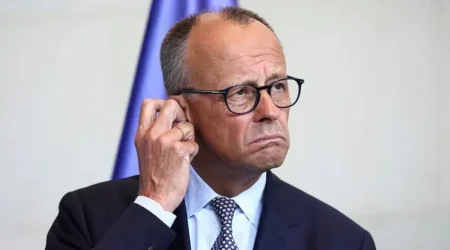Bitcoin halving slashes block rewards, Hong Kong OKs crypto ETFs, TON touts growth | Weekly Recap
Bitcoin witnesses massive drop after halving; Hong Kong approves launch of spot Bitcoin (BTC) and Ethereum (ETH) ETFs; TON takes the spotlight amid impressive growth and more top headlines from last week.
Build up to the halving
- Being the week of the fourth Bitcoin halving, this week witnessed a proliferation of discussions surrounding the much-anticipated event days before its implementation. On April 16, crypto.com CEO Kris Marszalek asserted that BTC could experience selloffs immediately after the halving.
- Despite this stance, Marszalek maintained that the Bitcoin halving would be bullish for BTC long-term. Interestingly, a day after these remarks, Bitcoin witnessed a massive drop, collapsing to a floor of $59,600 on April 17 before recovering to $61,277. The fall resulted in $115 million in liquidations within 4 hours.
- In addition, reports suggested that Bitcoin mining stocks had continued to decline ahead of the halving. Marathon Digital had collapsed 25% in a month; the Valkyrie Bitcoin Miners ETF had dropped 28%; and Riot Platforms saw a 30% decline.
- Bitwise CIO Matt Hougan argued in a CNBC interview this week that the Bitcoin halving is a “buy-the-news” event, citing a pattern of long-term price rallies following the three previous halvings.
- The Bitcoin network recorded a surge in transaction cost before the halving as a result of the emergence of Runes, a fungible token protocol on Bitcoin, developed by Ordinals founder Casey Rodarmor. As participants moved to mint Runes, Bitcoin network fees spiked to $19 on April 18.
Crypto market slides post-halving
- The Bitcoin halving eventually occurred on April 20 at 00:09 UTC during the 840,000th Bitcoin block. The event slashed Bitcoin block rewards from the previous 6.25 BTC per block to the current 3.125 BTC, effectively reducing Bitcoin’s inflation rate by half.
- In line with the remarks from Bitwise CIO Hougan and Crypto.com CEO Marszalek, crypto prices saw a mild decline immediately after the halving occurred.
- The global crypto market cap dropped 1.32% hours after the halving, but meme coins such as Duko saw substantial gains.
Hong Kong greenlights spot crypto ETFs
- In a bullish turn of events, the Hong Kong Securities and Futures Commission (SFC) gave conditional approval for the launch of spot Bitcoin and Ethereum ETFs.
- This approval did not particularly permit the trading of any spot ETFs in these assets; it allows asset managers in the region to file applications for their trading. Any application would have to go through a vetting process from the SFC before launch.
- Shortly after the development, Bloomberg ETF analyst Eric Balchunas expects to see the market record massive capital inflows, amounting to $1 billion in the first two years.
US regulatory climate
- Lawmakers in Arkansas moved to approve two bills that could limit crypto mining activities in the state. However, the bills are yet to become full-blown legislation.
- U.S. Senators Cynthia Lummis and Kristen Gillibrand put forward a bill developed in conjunction with the New York State Department of Financial Services and the Federal Reserve, seeking to regulate the operations of stablecoins in the U.S.
- While these discussions on regulations persisted, Senator Marsha Blackburn reignited talks surrounding CBDCs, arguing against the assets. According to Blackburn, who favored Bitcoin, CBDCs pose privacy risks to U.S. citizens.
- In its routine pattern of enforcement actions, the U.S. Securities and Exchange Commission (SEC) unveiled in an updated complaint that there are grounds upon which it could pursue legal actions against Justin Sun, founder of Tron network.
Global regulatory efforts
- The U.K. government confirmed that it aims to implement stablecoin and cryptocurrency laws by the third quarter of this year.
- Also, Norway took an aggressive stance against crypto mining this week. Notably, information from local media suggested that the country’s legislative arm is looking to clamp down on crypto-mining activities through new legislation.
TON records growth
- The Open Network’s (TON) ecosystem witnessed a three-fold growth over 30 days, surpassing $148 million this week.
- On-chain data from April 19 confirmed that Tether minted $10 million worth of its USDT stablecoin on the TON blockchain, triggering bullish sentiments that resulted in a 17% price spike for the TON native token.
- On the same day, leading crypto payment provider Mercuryo unveiled a partnership with TON to launch a fiat-to-crypto on-ramp service on the TON blockchain specifically for USDT. The TON Foundation also introduced an incentive program to reward USDT users with 11 million TON amid the partnership with USDT.
- As these growth initiatives prevailed, Pavel Durov, founder of Telegram messenger, discussed the new innovative futures on the TON blockchain while speaking at the Token2049 conference in Dubai.
Snippets from Token2049
- Rainfall and flooding disrupted the Token2049 conference and the Blockchain Life conference.
- At Token2049, Binance CEO Richard Teng discussed regulatory affairs surrounding the stablecoins and the detainment of Binance executives in Nigeria.
- Binance COO Noah Perlman noted that the platform’s agreement with the U.S. Department of Justice has presented challenges to its vision for global expansion.
- Ava Labs CEO Emin Gün Sirer argued that Avalanche was never developed as an Ethereum killer, contrary to prevailing beliefs.













Leave a Reply